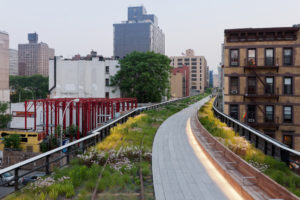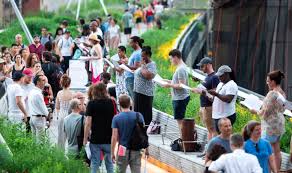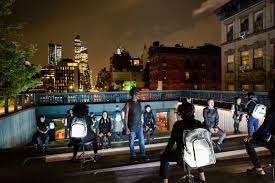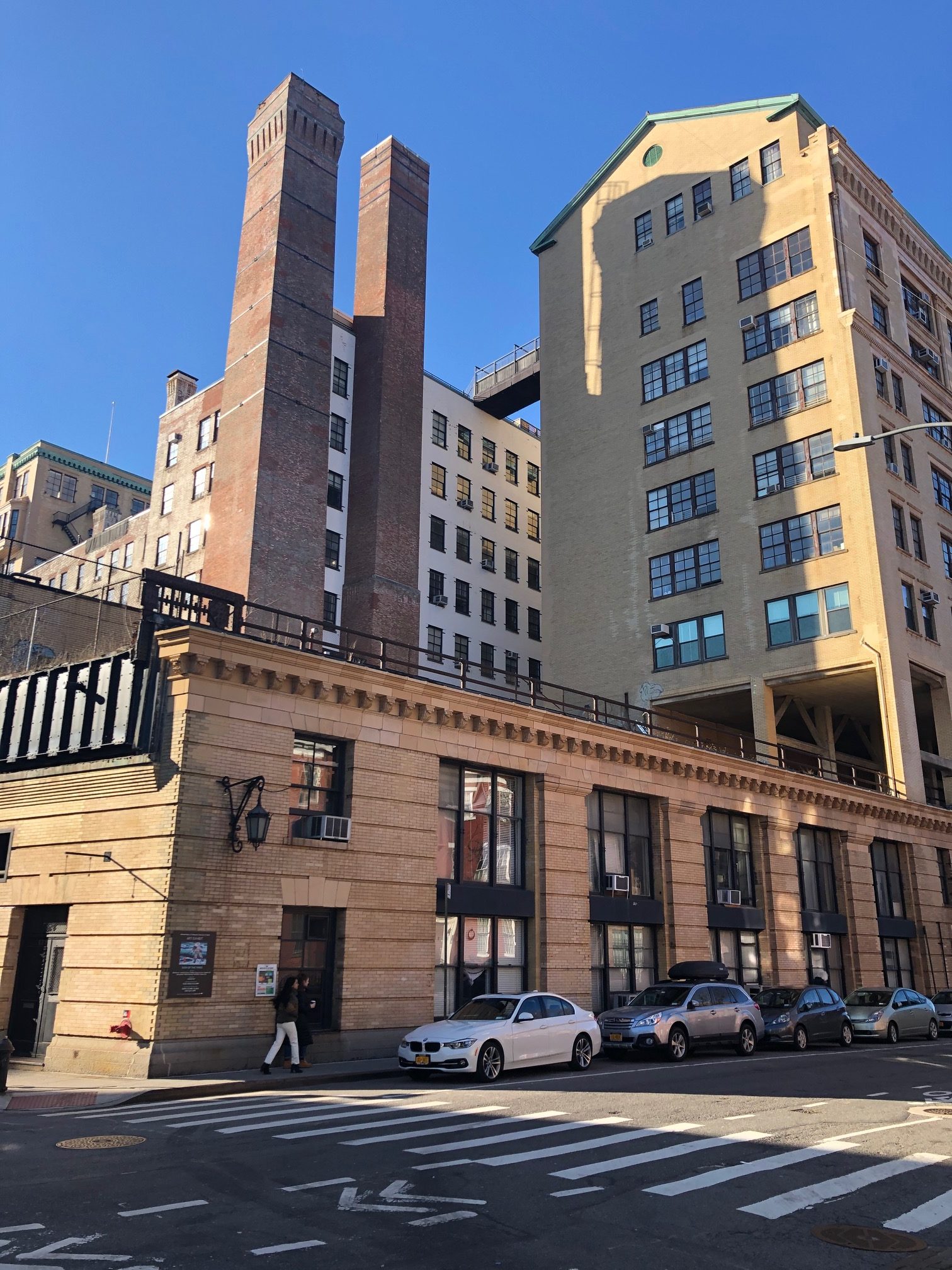
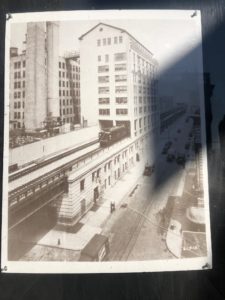
The southern end of the High Line today and with an active train track back in the day.
One of the many things on my mind these days is how arts organizations will need to find new, innovative ways to re-purpose their public spaces – many of which were designed for large, wealthier crowds – now that we’re in the age of COVID-19. From the 1950’s to the 2008 Great Recession, we saw a huge growth in arts organizations across the U.S. (aided by the establishment of the 501c3 tax exempt status, the creation of the NEA, and the shift in focus to demand professional arts in our local communities). This surging, never ending growth of the arts (theaters, opera companies, symphonies, dance companies, museums) across these sixty years inevitably led to the design and building of larger and more opulent buildings for these organizations. In the first fifteen years of the 21st century, dozens of theaters opened new – or largely enhanced – buildings aimed at growing their audiences and servicing their donors with better lounges, better bars, better lobbies and restrooms – including The Guthrie, Arena Stage and The Public Theater. Strangely enough, around the time these plans were being finalized and executed, circa 2007, the iPhone came online and audiences suddenly had so much content and engagement in their pockets, there was no way the surging growth in audiences from the 20th century could continue. In Washington, DC along, thousands of new theater seats were added to inventory without any indication where those new patrons would come from. Even before COVID-19, we were over grown and over built. Now that big crowds and opulent bars suddenly seem very out of date, the question of how arts organizations re-purpose and use these spaces in new ways is already being called out:
Which leads me back to thinking about the High Line in NYC and the Mile Long Opera I mentioned in a post last week. This brilliant re-purposing of a previous industrial and transit space into a public beauty may point to some ways we can think about opening up arts spaces to be relevant post-COVID-19. Many new arts buildings have large “public” spaces that are really private (intended clearly for ticket holders only). One exception to this is the public lobby and cafe space at the Signature Theater in NYC, where artists and the general public are encouraged to gather, hold meetings, meet friends, on a daily basis – in a way that is sorely needed now in the city.
So can we in the arts make our public spaces truly public? How can we open the doors to visitors? Encourage people to gather and enter our buildings freely, so that these large spaces stay relevant? Can large organizations with big buildings truly collaborate with smaller organizations in need of space, by welcoming them in to rehearse, produce, display and play in their buildings? Mergers across the arts will be in vogue over the next few years. Sharing spaces and audiences should be too. Making our spaces available and able to support public life – and to support the kind of social convening and innovation we need so desperately now – will be one key to the arts staying relevant in everyone’s lives. After all, if these buildings aren’t available to all, we can always go to the High Line.
NYC’s first elevated train and the world’s first streetcar began in Greenwich Village
